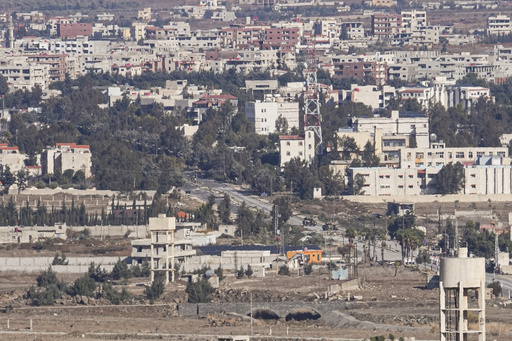
DAMASCUS – Syrians erupted in celebration during the first Friday prayers after the removal of President Bashar Assad, as crowds gathered at the historic Umayyad Mosque and in various towns across the nation, marking the end of decades of authoritarian leadership.
The interim prime minister, who has been recently appointed, led the sermon at the Umayyad Mosque, proclaiming the beginning of a new chapter filled with “freedom, dignity, and justice” for the Syrian people.
These gatherings showcased the profound transformation occurring in Syria just days after rebel forces seized control of Damascus, leading to Assad’s ousting. Amid the celebrations, U.S. Secretary of State Antony Blinken engaged with regional partners, advocating for an “inclusive and non-sectarian” interim government as a path forward for the nation.
After visiting Jordan and Turkey—both of which support certain insurgent factions—Blinken made an unplanned stop in Iraq. So far, there have been no discussions regarding direct meetings with Syria’s newly established leadership.
The main insurgent group, Hayat Tahrir al-Sham (HTS), is focused on instilling order and initiating a political transition following their capture of Damascus. Their leadership is working to calm a populace that is both astonished by the sudden changes and apprehensive about potential extremist influences among the rebels.
Leaders of HTS maintain that they have distanced themselves from past extremist affiliations, though the group retains its designation as a terrorist organization by both the United States and several European nations.
Ahmad al-Sharaa, the leader of HTS, who was formerly known as Abu Mohammed al-Golani, shared a video message congratulating the Syrian populace for what he termed “the victory of the blessed revolution.” He urged citizens to express their joy peacefully without resorting to violence, emphasizing the need to collaborate to rebuild their nation post-conflict.
In Damascus, throngs of people—including insurgents—filled the iconic Umayyad Mosque, many waving the red-starred opposition flag, symbolizing the rejection of the former Assad regime’s insignia. State television noted that the sermon was led by Mohammed al-Bashir, the interim prime minister appointed by HTS earlier that week.
The significance of the mosque, renowned as one of the world’s oldest, is profound; it has symbolized Syria’s cultural heritage for over a millennium and stood as a site where sermons were tightly controlled under the Assad administration. Historically, during the early days of Syria’s anti-government protests in 2011, worshippers would leave Friday prayers to peacefully rally against Assad’s rule, predating a severe crackdown that spiraled into a prolonged civil conflict.
One worshipper, Ibrahim al-Araby, shared his joy, stating that he had not entered the Umayyad Mosque since 2011 due to strict security measures, saying, “I haven’t been this happy in years.” Another attendee, Khair Taha, expressed a mix of optimism and apprehension about the future, recognizing the potential for shared governance and reconstruction.
In a nearby gathering at Umayyad Square, an immense crowd chanted slogans calling for a united Syria, with some expressing their disdain for Assad and his predecessors—a sentiment that would have led to severe repercussions in the past.
Khaled Abu Chahine, 51, from Daraa—where the initial protests began—voiced his aspirations for “freedom and coexistence” among all Syrians, regardless of their sect or background.
Interim prime minister al-Bashir previously led a de facto administration established by HTS in Idlib, a territory long held by opposition forces. The rapid offensive that led to the fall of Assad was unexpected, taking just ten days across the nation.
Similar jubilant scenes emerged in other cities such as Aleppo, Homs, Hama, Latakia, and Raqqa, demonstrating widespread enthusiasm for the recent political shift.
Leaders within HTS aim to foster a government that is inclusive, aiming to quell fears among various minority groups about the establishment of an extremist regime.
International recognition of this new government remains critical amid a complex geopolitical backdrop involving multiple foreign interests in Syria. Turkey has played a vital role in the insurgents’ success, often conflicting with U.S. interests regarding Kurdish forces in the region.
In related news, Turkish Foreign Minister Hakan Fidan announced the reopening of Turkey’s embassy in Damascus on Saturday, marking a significant diplomatic move since its closure in 2012 due to the ongoing civil conflict.
Meanwhile, U.S. forces continue their operations in eastern Syria against remnants of ISIS while backing Kurdish-led groups. Israel has targeted various sites throughout Syria following Assad’s fall, citing a need to preempt the strengthening of extremist factions.
In talks that followed, Blinken noted a general consensus with Turkey regarding aspirations for Syria’s future, emphasizing the need for a government that protects the rights of minorities and women without threatening neighboring countries.
Fidan underlined the urgency of establishing stability in Syria to prevent the resurgence of terrorism, referencing the threats posed by both ISIS and the PKK, the latter of which Turkey considers a terrorist entity.
A U.S. official indicated that discussions held in Ankara included concerns about potential Kurdish attacks on Turkish positions, signaling the complex dynamics expected to emerge as Syria transitions into a new political landscape.
As Blinken met with Iraqi Prime Minister Mohammed al-Sudani, both emphasized the need to prevent ISIS from regaining strength in light of Syria’s ongoing transformations, reiterating a unified front against the group and its influence.
The commitment to containing ISIS and securing regional stability underscored the intertwined fates of neighboring countries in navigating the post-Assad landscape and the broader implications for international relations in the area.
